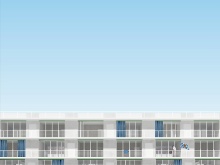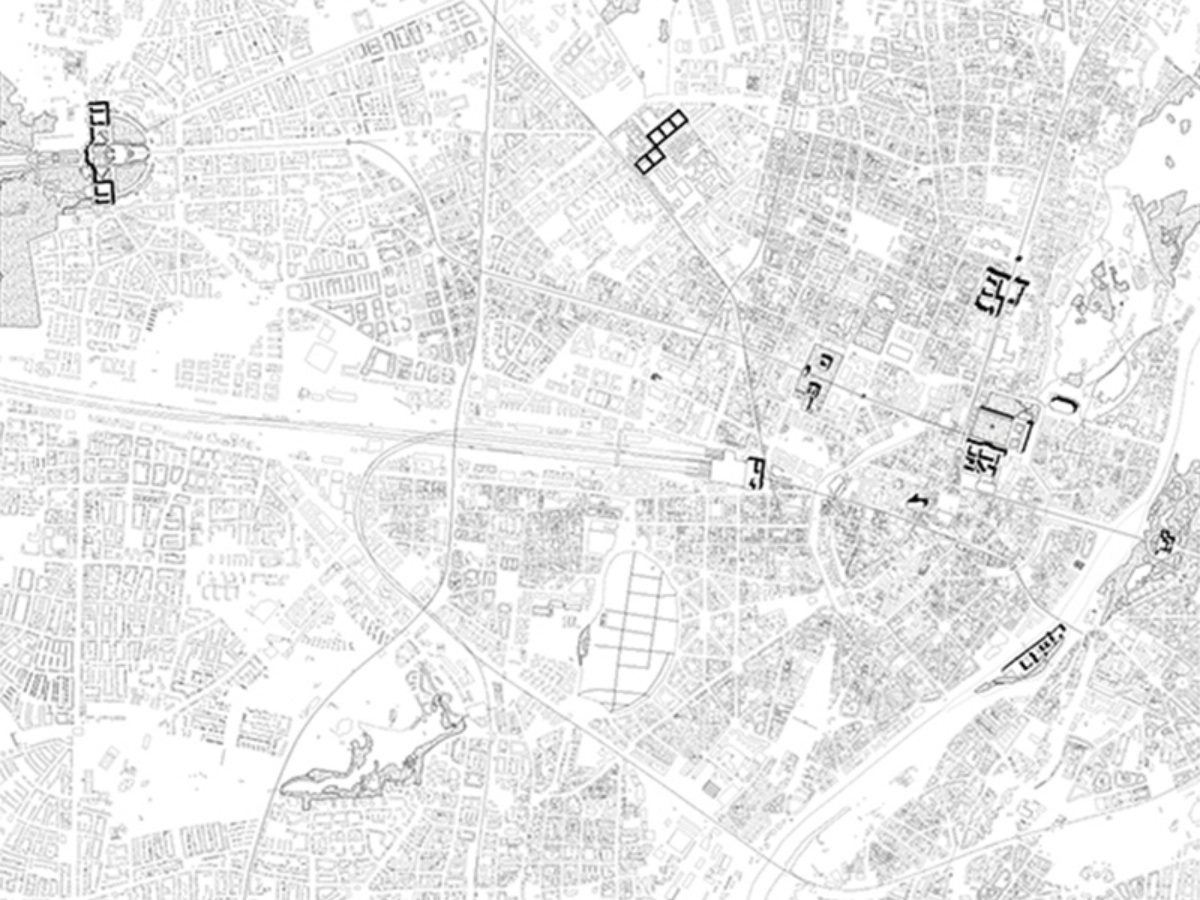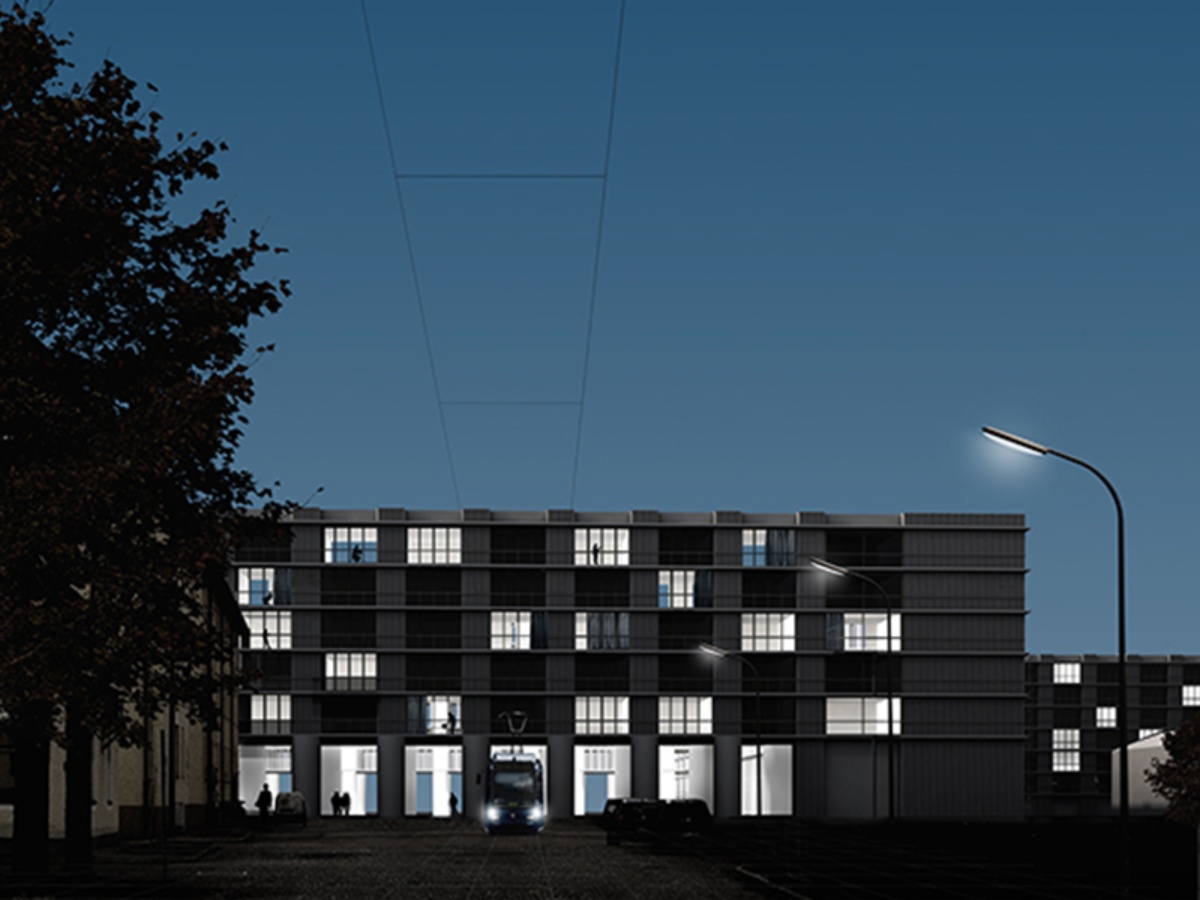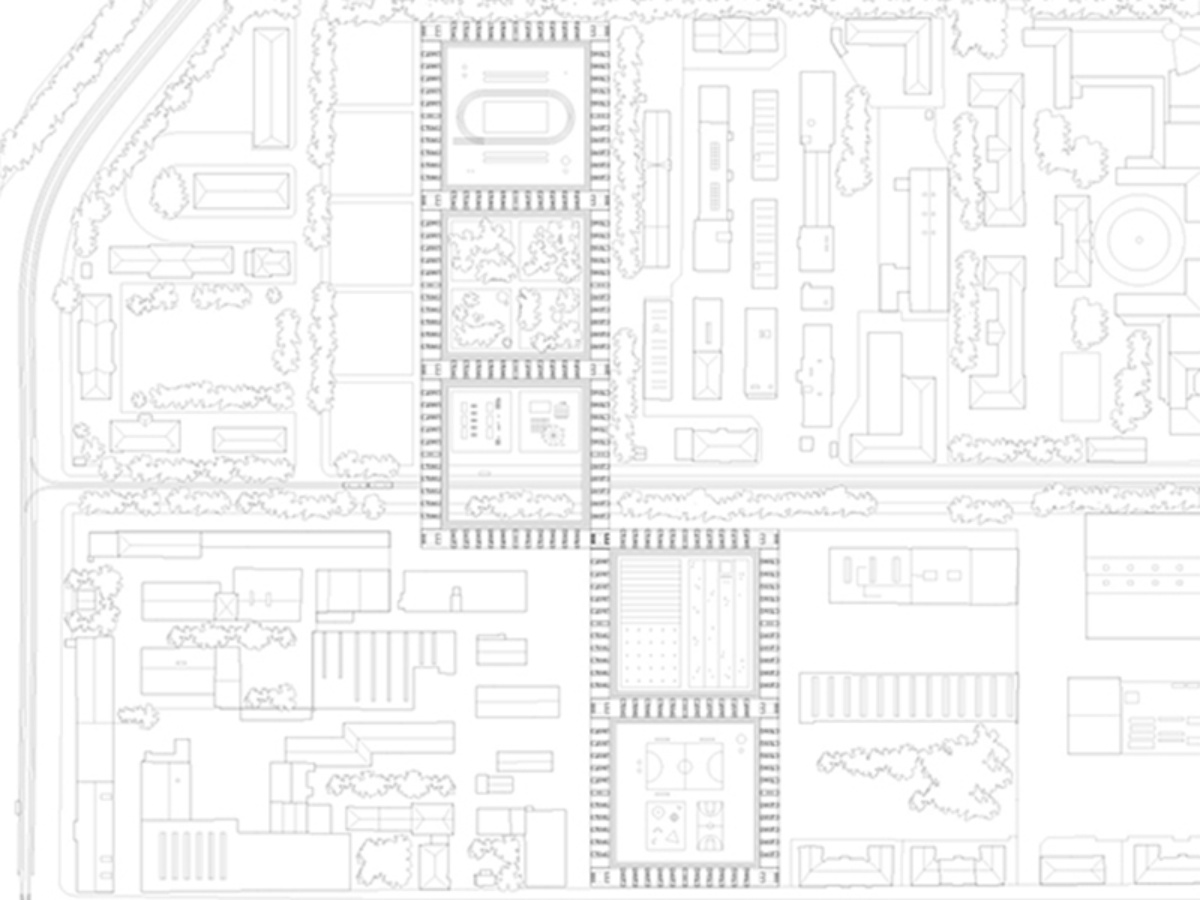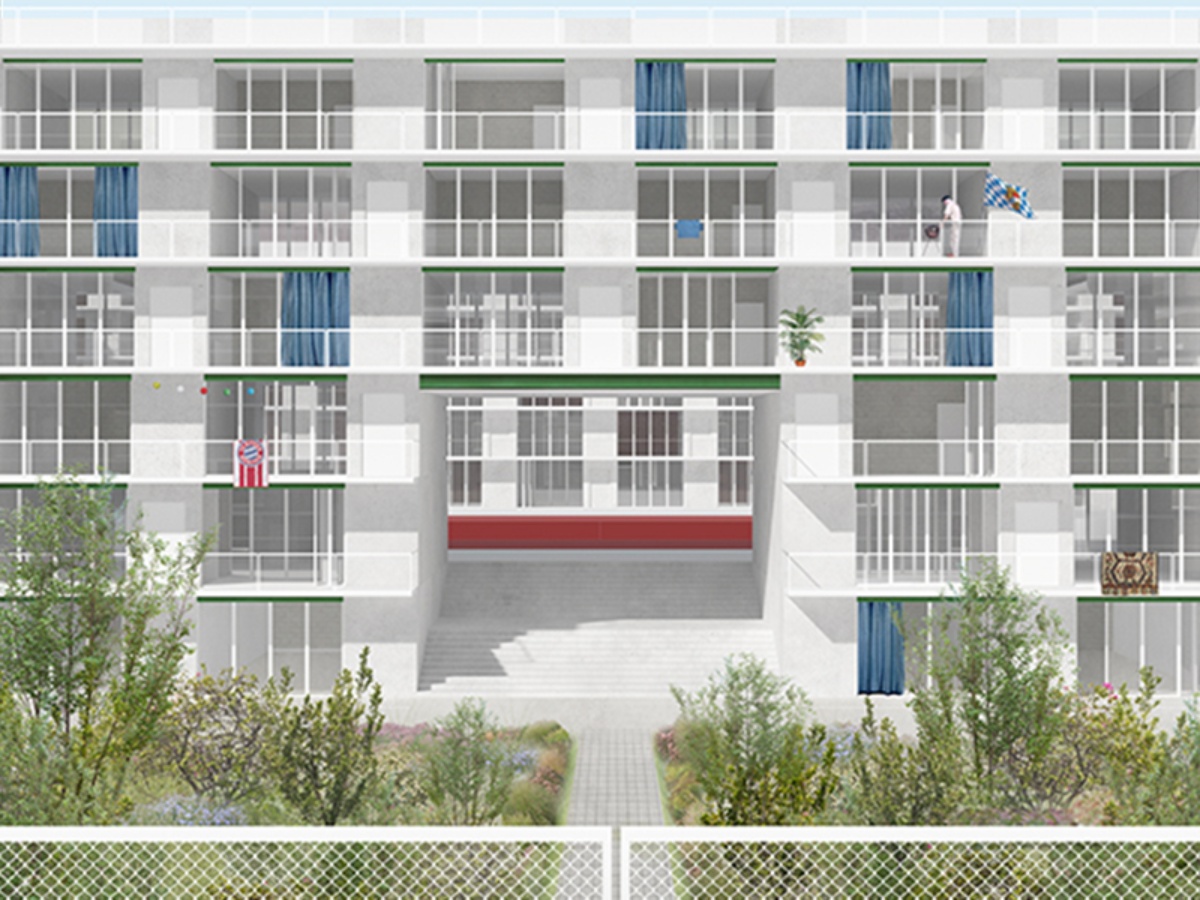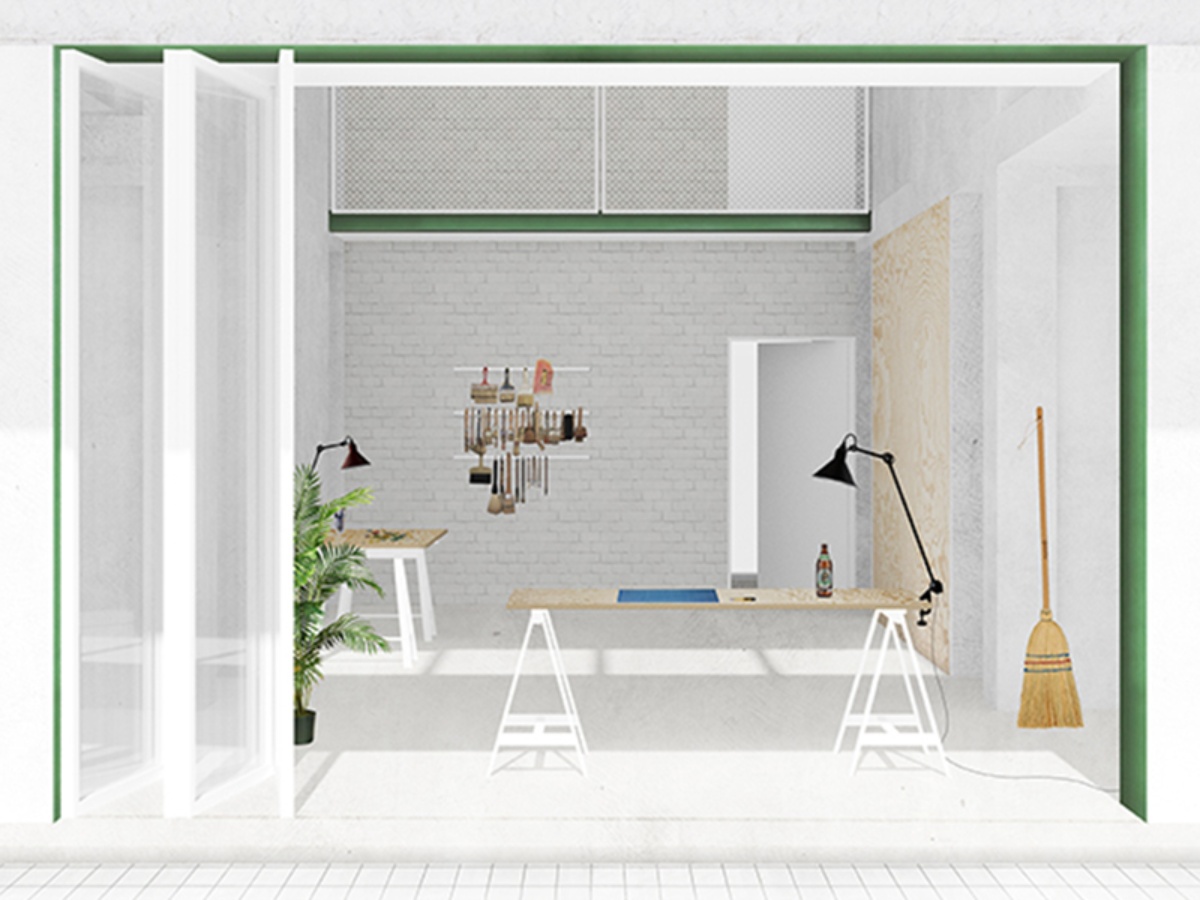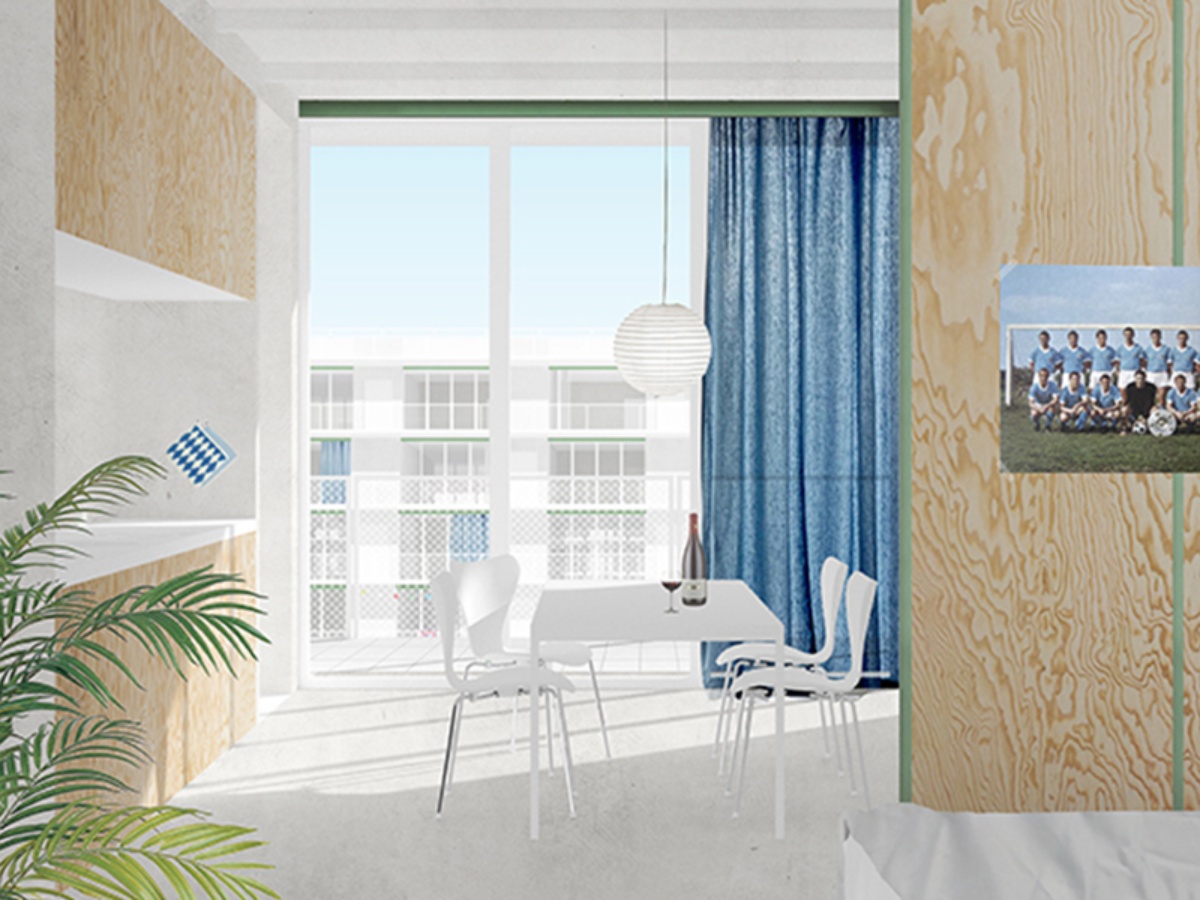The Collective Monument tries to respond to the topic of social housing on two very different scales. On one side, the Großform and its interaction between the urban fabric of the city and the monumental approach of the building itself. On the other side, the domestic space as in form of the household figured by the smallest scale, the living unit itself.
While focusing on the demands of modern social housing the projects attempt is understood on an exemplary level. Many analyzed arguments can be adapted to several European cities but the particular site already shows a frequent situation in modern urban development.The Luitpoldskaserne in Munich is one of many so-to-call post-war wastelands within Germany. Former occupying powers have left promising opportunities for further planning inside the city centers. Within these wide and empty angles of the site, the architecture of the commons should receive a dignified stance.
The projects figure is defined by five squared courtyards. While all have their very unique identity — as central market or event space, as garden or agricultural space, or even as an outdoor sports area — the monumental approach is saturated by the experienced sequence. To provide a fluctuating and alive process the building has several ideas of living. Student housing with a generous co-working space, small single apartments with shared kitchens and nucleus housing with an enfilade like floorplan contrast the conventional social housing scheme in the top floors. While the temporary living takes place in the lower floors the higher, the longer the term of housing gets. The whole organism of the building is grounded by a functional wall. These two meter thick walls take all “dark spaces” as circulation, storage or bathroom while the in-between space offers the most flexible configuration possible.
Tutors: Jacob Höppner, Selina Ahmann


